Yuqun Zhang
OASIS: Order-Augmented Strategy for Improved Code Search
Mar 11, 2025



Abstract:Code embeddings capture the semantic representations of code and are crucial for various code-related large language model (LLM) applications, such as code search. Previous training primarily relies on optimizing the InfoNCE loss by comparing positive natural language (NL)-code pairs with in-batch negatives. However, due to the sparse nature of code contexts, training solely by comparing the major differences between positive and negative pairs may fail to capture deeper semantic nuances. To address this issue, we propose a novel order-augmented strategy for improved code search (OASIS). It leverages order-based similarity labels to train models to capture subtle differences in similarity among negative pairs. Extensive benchmark evaluations demonstrate that our OASIS model significantly outperforms previous state-of-the-art models focusing solely on major positive-negative differences. It underscores the value of exploiting subtle differences among negative pairs with order labels for effective code embedding training.
Grammar-Based Code Representation: Is It a Worthy Pursuit for LLMs?
Mar 07, 2025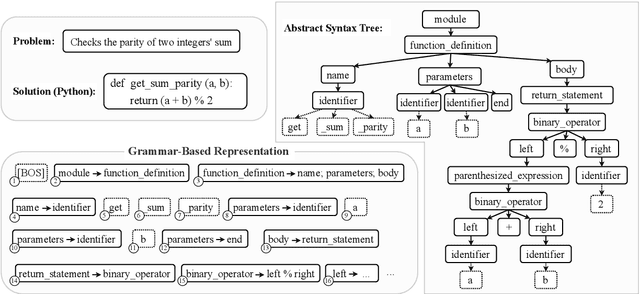
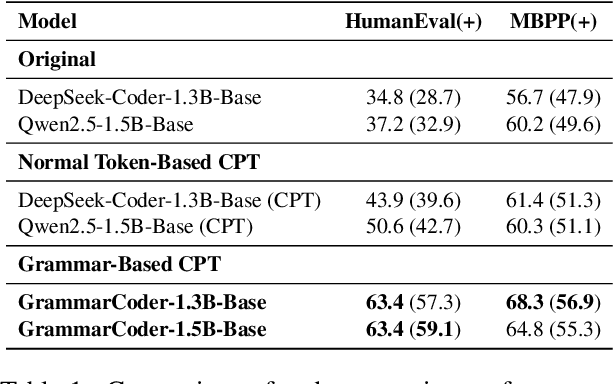
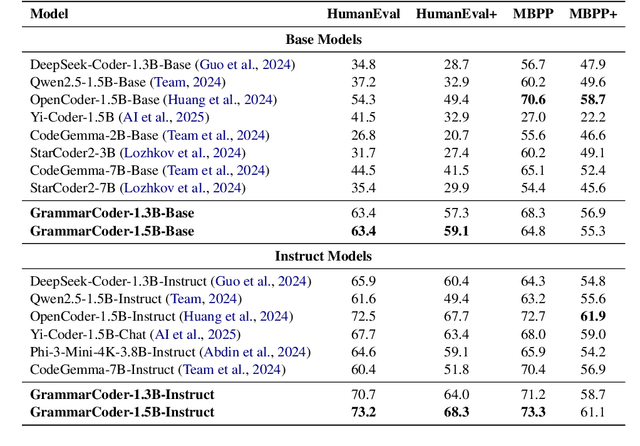
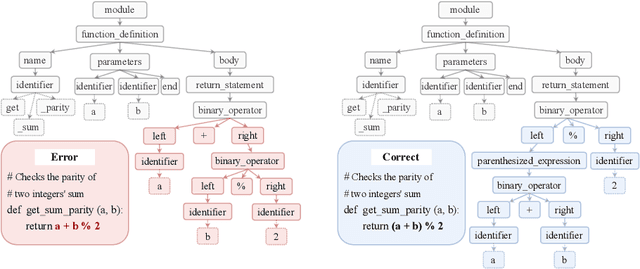
Abstract:Grammar serves as a cornerstone in programming languages and software engineering, providing frameworks to define the syntactic space and program structure. Existing research demonstrates the effectiveness of grammar-based code representations in small-scale models, showing their ability to reduce syntax errors and enhance performance. However, as language models scale to the billion level or beyond, syntax-level errors become rare, making it unclear whether grammar information still provides performance benefits. To explore this, we develop a series of billion-scale GrammarCoder models, incorporating grammar rules in the code generation process. Experiments on HumanEval (+) and MBPP (+) demonstrate a notable improvement in code generation accuracy. Further analysis shows that grammar-based representations enhance LLMs' ability to discern subtle code differences, reducing semantic errors caused by minor variations. These findings suggest that grammar-based code representations remain valuable even in billion-scale models, not only by maintaining syntax correctness but also by improving semantic differentiation.
LLM4Decompile: Decompiling Binary Code with Large Language Models
Mar 08, 2024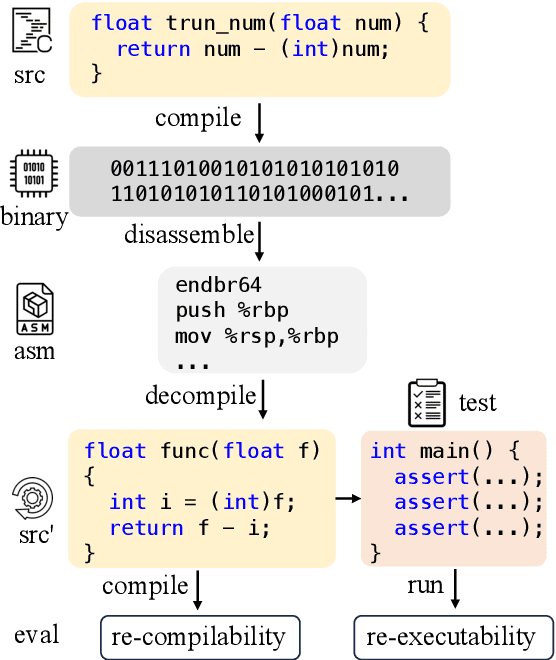

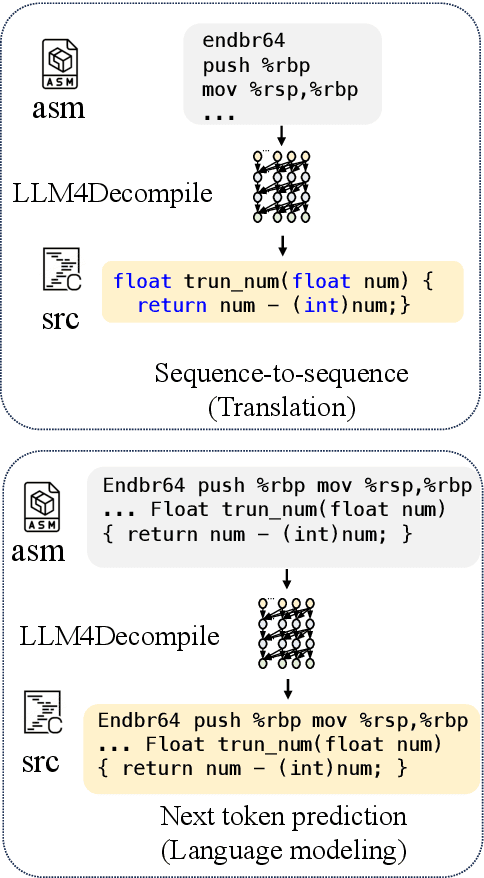

Abstract:Decompilation aims to restore compiled code to human-readable source code, but struggles with details like names and structure. Large language models (LLMs) show promise for programming tasks, motivating their application to decompilation. However, there does not exist any open-source LLM for decompilation. Moreover, existing decompilation evaluation systems mainly consider token-level accuracy and largely ignore code executability, which is the most important feature of any program. Therefore, we release the first open-access decompilation LLMs ranging from 1B to 33B pre-trained on 4 billion tokens of C source code and the corresponding assembly code. The open-source LLMs can serve as baselines for further development in the field. To ensure practical program evaluation, we introduce Decompile-Eval, the first dataset that considers re-compilability and re-executability for decompilation. The benchmark emphasizes the importance of evaluating the decompilation model from the perspective of program semantics. Experiments indicate that our LLM4Decompile has demonstrated the capability to accurately decompile 21% of the assembly code, which achieves a 50% improvement over GPT-4. Our code, dataset, and models are released at https://github.com/albertan017/LLM4Decompile
HICL: Hashtag-Driven In-Context Learning for Social Media Natural Language Understanding
Aug 19, 2023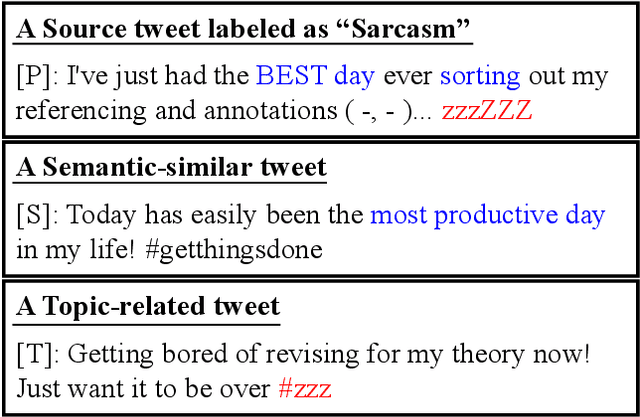

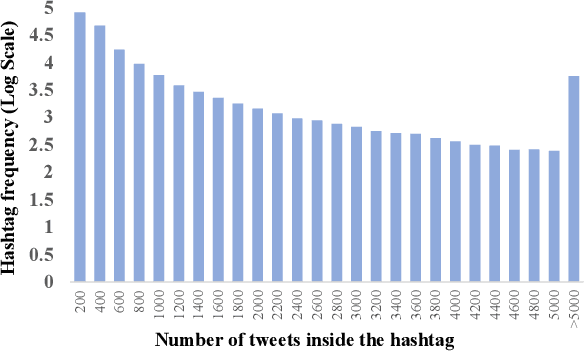

Abstract:Natural language understanding (NLU) is integral to various social media applications. However, existing NLU models rely heavily on context for semantic learning, resulting in compromised performance when faced with short and noisy social media content. To address this issue, we leverage in-context learning (ICL), wherein language models learn to make inferences by conditioning on a handful of demonstrations to enrich the context and propose a novel hashtag-driven in-context learning (HICL) framework. Concretely, we pre-train a model #Encoder, which employs #hashtags (user-annotated topic labels) to drive BERT-based pre-training through contrastive learning. Our objective here is to enable #Encoder to gain the ability to incorporate topic-related semantic information, which allows it to retrieve topic-related posts to enrich contexts and enhance social media NLU with noisy contexts. To further integrate the retrieved context with the source text, we employ a gradient-based method to identify trigger terms useful in fusing information from both sources. For empirical studies, we collected 45M tweets to set up an in-context NLU benchmark, and the experimental results on seven downstream tasks show that HICL substantially advances the previous state-of-the-art results. Furthermore, we conducted extensive analyzes and found that: (1) combining source input with a top-retrieved post from #Encoder is more effective than using semantically similar posts; (2) trigger words can largely benefit in merging context from the source and retrieved posts.
DeepBillboard: Systematic Physical-World Testing of Autonomous Driving Systems
Dec 27, 2018
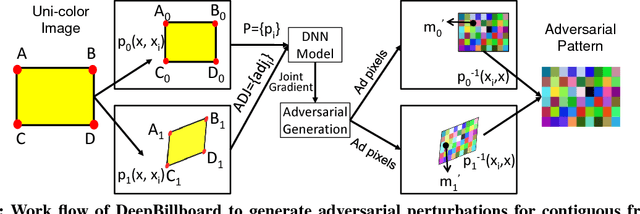

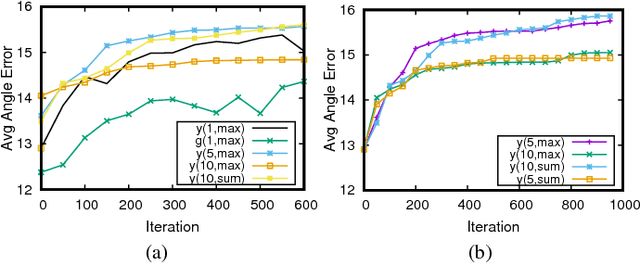
Abstract:Deep Neural Networks (DNNs) have been widely applied in many autonomous systems such as autonomous driving. Recently, DNN testing has been intensively studied to automatically generate adversarial examples, which inject small-magnitude perturbations into inputs to test DNNs under extreme situations. While existing testing techniques prove to be effective, they mostly focus on generating digital adversarial perturbations (particularly for autonomous driving), e.g., changing image pixels, which may never happen in physical world. There is a critical missing piece in the literature on autonomous driving testing: understanding and exploiting both digital and physical adversarial perturbation generation for impacting steering decisions. In this paper, we present DeepBillboard, a systematic physical-world testing approach targeting at a common and practical driving scenario: drive-by billboards. DeepBillboard is capable of generating a robust and resilient printable adversarial billboard, which works under dynamic changing driving conditions including viewing angle, distance, and lighting. The objective is to maximize the possibility, degree, and duration of the steering-angle errors of an autonomous vehicle driving by the generated adversarial billboard. We have extensively evaluated the efficacy and robustness of DeepBillboard through conducting both digital and physical-world experiments. Results show that DeepBillboard is effective for various steering models and scenes. Furthermore, DeepBillboard is sufficiently robust and resilient for generating physical-world adversarial billboard tests for real-world driving under various weather conditions. To the best of our knowledge, this is the first study demonstrating the possibility of generating realistic and continuous physical-world tests for practical autonomous driving systems.
 Add to Chrome
Add to Chrome Add to Firefox
Add to Firefox Add to Edge
Add to Edge